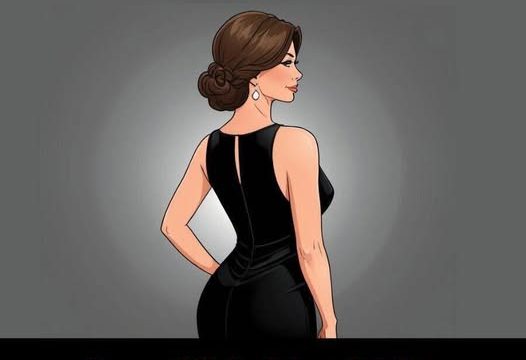Imagine looking at a stunning mountain landscape. What catches your eye first? Do you see the shape of a soaring eagle gliding gracefully across the sky, or does your attention drift to the sturdy form of a goat scaling the rugged cliffs? This simple question reveals more about your brain than you might expect. Whether you notice the eagle or the goat first, your interpretation taps into how your brain processes visual information and reflects the unique way your mind makes sense of the world.

The human brain is a remarkable machine, constantly working to decode the environment around us. Divided into two hemispheres—commonly referred to as the right and left sides—each hemisphere processes information in different ways. These differences influence not only how we approach problems but also how we perceive the world.
Right-brained individuals are known for their creativity, intuition, and ability to think in broad, abstract patterns. They often excel in artistic tasks and rely heavily on visual-spatial reasoning. If you are right-brained, you may be more likely to notice the fluid shapes and natural forms within the contours of the mountain, such as a goat blending seamlessly into the rocky slopes.
In contrast, left-brained individuals are detail-oriented, analytical, and logical thinkers. They thrive on structure and excel in tasks requiring precision, such as solving puzzles or analyzing data. If your left brain is dominant, you might be drawn to the sharp, angular lines that outline the eagle’s wings as they align with the jagged peaks of the mountain.
Goat or Eagle: Which Do You Spot First?
Take a moment to picture the scene again. Do you notice the goat clinging to the rocky edges of the mountain, or does the eagle’s expansive wingspan grab your attention? This question isn’t just about what you see—it delves into the phenomenon of pareidolia. Pareidolia is a psychological occurrence where the brain recognizes familiar patterns or objects in random stimuli, such as seeing faces in clouds or animals in rock formations. While both the goat and eagle may exist within the same image, the way your brain interprets visual cues determines which one stands out first.
@richiegattztv #foryoupage #fyp #fyb #foryou ♬ original sound – richiegattztv
Seeing the Goat: A Right-Brained Perspective
If the goat is what you notice first, your brain may be processing the image abstractly, focusing on the subtle connections between shapes and patterns. The goat’s horns and legs might blend into the uneven contours of the mountain, while its body seems to merge with the natural curves of the rocky terrain. This interpretation reflects a creative and intuitive mind that is attuned to broad, organic patterns rather than sharply defined forms.
People who tend to see the goat first often have strong imaginative skills and excel in creative pursuits. They are naturally adept at spotting hidden details and connecting abstract concepts. Their minds fill in the gaps, allowing them to see what others might overlook.
Spotting the Eagle: A Left-Brained Interpretation
If the eagle immediately catches your attention, your brain may be zeroing in on a more defined, structured image. The eagle’s wings might be outlined by the sharp peaks of the mountain, with its head forming from cloud patterns above. This interpretation is rooted in your brain’s preference for clear, angular lines and distinct shapes.
Those who spot the eagle first often excel in logical thinking, problem-solving, and organization. They approach tasks methodically, seeking clarity and precision. This tendency reflects a structured way of processing information and a focus on what’s readily recognizable.
A Fun but Flexible Exercise
While this visual exercise highlights tendencies in brain function, it’s important not to overanalyze the results. Seeing the goat or the eagle first doesn’t mean you’re strictly right-brained or left-brained. In reality, everyone’s brain is a blend of creativity and logic, and different situations activate different parts of our thinking.
What this exercise truly demonstrates is how flexible and fascinating our perception can be. The brain has an incredible ability to shift between abstract thinking and structured reasoning, depending on what’s required. The image you see might reflect your current mood, mindset, or personal interpretation of the world in that moment.
What Shapes Our Perception?
Our ability to interpret images, like the goat or eagle, is shaped by various factors, including personal experiences, cultural background, and individual preferences. This capacity to find meaning in patterns—whether spotting animals in mountains or faces in clouds—is uniquely human and reflects the brain’s natural inclination to make sense of its surroundings.
Interestingly, this pattern-seeking behavior is deeply rooted in evolution. Early humans needed to quickly identify threats, such as predators hidden in foliage, or recognize vital resources like food or shelter. This survival mechanism has carried over into modern life, manifesting in playful ways like deciphering optical illusions or enjoying visual puzzles.
The Beauty of Different Perspectives
What makes this exercise so compelling is its reminder of how diverse human perception can be. Two people can look at the same image and walk away with entirely different interpretations. One person may see strength and grace in the eagle’s soaring form, while another finds steadiness and perseverance in the goat’s climb. Neither is wrong; they simply reflect unique ways of seeing the world.
Conclusion: What Does Your Perception Say About You?
Whether you notice a goat scaling a mountain or an eagle soaring through the sky, your perception highlights the fascinating way your brain processes visual information. It’s not just about what you see—it’s about how you see it and what that reveals about your thought patterns.
So, next time you encounter an optical illusion or a captivating landscape, take a moment to reflect on what stands out to you. Is there a hidden figure waiting to be discovered? More importantly, what does your choice say about the way you perceive the world?
In the end, whether you’re a “goat person” or an “eagle person,” what matters most is how you engage with the images and experiences that surround you. Each perspective offers an opportunity to explore something new, hidden just beyond the obvious, waiting to be revealed by your unique way of seeing the world.





